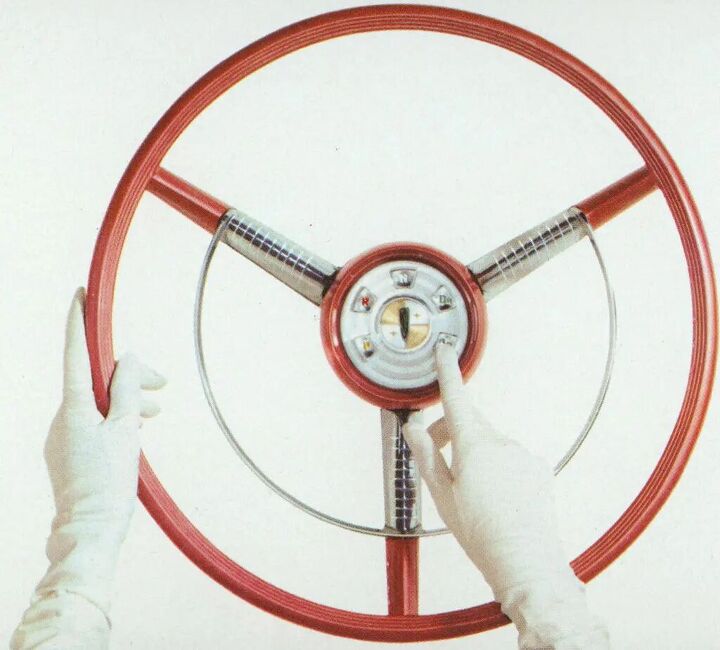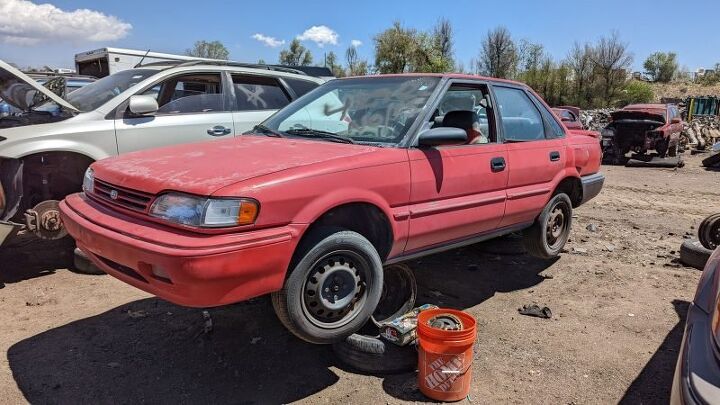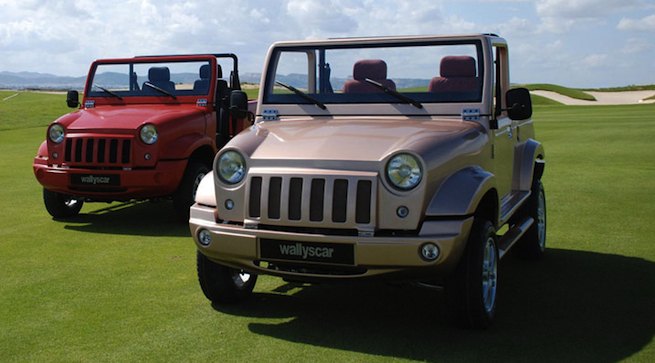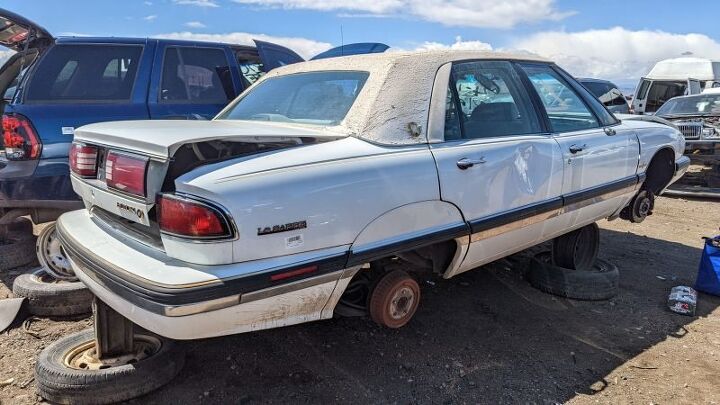#1990s
Junkyard Find: 1993 Mazda MX-5 Miata
The Mazda Miata has been with us for well over three decades, becoming the best-selling two-seat sports car in history along the way. Miatas were popular as quasi-sensible commuter cars in North America well into our current century, which means that I should have been seeing at least a couple in every junkyard I’ve visited for at least the last 15 years. In fact, I still see many more discarded MGBs and Fiat 124 Sport Spiders than I do Miatas, so this reasonably intact ’93 in Crystal White paint caught my attention immediately (naturally, there was an ’81 Fiat Spider 2000 a few rows away).
Rare Rides Icons: The History of Kia's Larger and Full-size Sedans (Part VII)
We return to Kia’s midsize-or-larger sedan history today in the latter portion of the 2000s. In our last entry, we learned about the Optima, which arrived as Kia’s first midsize developed under Hyundai’s majority ownership. Sensibly the Optima was a light rework of Hyundai’s Sonata, and the two shared almost everything (including very poor crash safety ratings).
On the more executive full-size side of the lineup, Kia’s Opirus was the first large car developed under Hyundai ownership. It shared a platform with the Grandeur (XG350 to you). While the Opirus saw okay sales in most markets, it failed in North America where it was sold as the Amanti. Very few North Americans wanted a $39,600 (adjusted) Kia, no matter how many luxury styling touches it borrowed from other brands. And so the Amanti was canceled after 2009 locally (2012 elsewhere). By that time its replacement was already on sale. Meet K7.
Abandoned History: Ford's Cruise-O-Matic and the C Family of Automatic Transmissions (Part IV)
Last time on our Abandoned History coverage of Ford’s historical Cruise-O-Matic automatic transmission, we spent some time in Russia. Communist automaker GAZ liked Ford’s automatic and decided to lightly rework it into their “own” transmission rather than pay Ford to build it under license. The GAZ two- and three-speed automatics remained in use in the company’s passenger cars well into the Eighties, which was a very long time for a late Fifties transmission to live.
Shortly after GAZ made its copies, the real versions of the FX/MX Cruise-O-Matic and Ford-O-Matic were nearing the end of their respective service lives. The two-speed was naturally the first to go.
Abandoned History: Ford's Cruise-O-Matic and the C Family of Automatic Transmissions (Part III)
We pick up our Cruise-O-Matic automatic transmission coverage again today, as Ford’s first mass-produced gearbox found its stride in the Fifties. As consumers turned toward automatic transmissions in their two- and four-door domestic iron, they also turned toward more powerful V8 engines and big chrome bumpers and tail fins. Detroit’s manufacturers had to respond, and Ford’s answer was a second-generation Ford-O-Matic, the FX and MX. Both transmissions were marketed under the new Cruise-O-Matic moniker, while a new generation two-speed auto became the bargain basement Ford-O-Matic.
As we discussed in our last entry, in 1957 and 1958 Ford offered fiddly Keyboard Control. The whiz-bang new feature meant the Cruise-O-Matic was operated by confusingly marked dash-mounted buttons on select Mercury vehicles. And while Keyboard Control was limited to Mercury, an even worse version of the same idea was reserved for Edsel.
Rare Rides Icons: The History of Kia's Larger and Full-size Sedans (Part VI)
We return to the story of Kia’s midsize and larger sedans today, around the point when Kia found itself under the watchful eye of Hyundai. The larger South Korean company purchased a controlling stake in its competition in 1998, which meant big changes to Kia’s product almost immediately after.
The union led to the first full-size luxury sedan Kia developed from the ground up, the Opirus (Amanti to you). It turned out the Amanti was the derivative and rather ugly sedan few in North America desired, though it fared a bit better elsewhere. But by the time the Amanti arrived, Kia was already selling a new midsize that North Americans did want. Let’s talk Optima.
Abandoned History: Ford's Cruise-O-Matic and the C Family of Automatic Transmissions (Part II)
We continue our Abandoned History coverage of the Ford Cruise-O-Matic transmission today, shortly after the three-speed automatic established itself as a reliable motivation source for Ford, Lincoln, and Mercury products. Developed by the Warner Gear division of Borg-Warner, the new automatic caught Ford up to the competition as far as an automatic offering was concerned. Efficient and economical to build, Studebaker got in on the Cruise-O-Matic action for their cars too.
After the box proved itself on Ford and Mercury cars, it spread to the luxurious ’55 Lincoln lineup where it replaced the four-speed GM Hydra-Matic. We pick up there, as efforts got underway to improve upon the original Borg-Warner design and add whiz-bang features. This entry doesn’t end up where you’d expect.
Rare Rides Icons: The Ford Festiva, a Subcompact and Worldwide Kia by Mazda (Part IV)
We reached a conclusion to the first Ford Festiva (or Kia Pride, Mazda 121, SAIPA, etc.) in our last installment, which saw the little hatchback finalize its Ford duties in 1993 and its Kia responsibilities in 2000. And while it continues life today as a Wallyscar in Tunisia, our coverage here moves on to Ford’s not-so-anticipated follow-up entry to Festiva, another Festiva! It’s an Aspire to you.
Junkyard Find: 1991 Geo Prizm GSi Sedan
When The General began building the AE82 Toyota Corolla (actually based on the JDM Sprinter version) at the NUMMI plant in California, that car got Chevrolet Nova badges. When Toyota debuted the E90 Corolla platform in 1987, it made sense for the NUMMI-ized version of the new E90 Sprinter to join the Suzukis and Isuzus of the new Geo brand. That car was the Geo Prizm, and I’ve found one of the super-rare factory-hot-rod GSi Prizms in a Denver-area self-service yard.
Rare Rides Icons: The History of Kia's Larger and Full-size Sedans (Part V)
In our last installment of Kia’s larger sedan history, we covered the midsize Credos. The Credos was an important first for Kia, as the first midsize the company produced where it had a bit of leeway with the design. Ultimately, the Credos hid its Mazda 626 bones decently well and did a good impersonation of a late Nineties Ford Contour after a refresh.
But just as Kia settled into Mazda platforms and designing their own sedans, the goalposts were moved courtesy of the 1997 Asian financial crisis. Kia was left without much money, and few options. We pick up there.
Abandoned History: Ford's Cruise-O-Matic and the C Family of Automatic Transmissions (Part I)
As we finished up our coverage of General Motors’ Turbo-Hydramatic family of transmissions, I asked which gearbox you might like to see covered next by Abandoned History. The comments honed in on Ford, and the various versions of the C family of automatics. Fine by me! Today we head back to the Fifties to learn about the genesis of all the Cs. It was the extremely Fifties-sounding Cruise-O-Matic, built with pride in Cincinnati, Ohio.
Rare Rides: The Wallyscar Brand, From Tunisia With Pride
Today’s topic is an automaker you’ve likely never heard of. It’s a small company that was founded not that long ago, offers vehicles in very limited markets, and produces around 600 vehicles per year. Its product is based upon old ideas from other manufacturers, all done up in fiberglass until very recently. Let’s enter the wonderful world of Wallyscar.
Rare Rides Icons: The Ford Festiva, a Subcompact and Worldwide Kia by Mazda (Part III)
We return to the Ford Festiva once again today, as the subcompact Mazda-designed hatchback stormed North American shores. It did so wearing a Ford badge and a South Korean VIN, courtesy of a Kia factory. But North America wasn’t the only place it landed.
As we learned last time, the Festiva was built in several different countries and assumed many identities over an extensive history. The Festiva still has not reached the end of its life, but we’ll cover that in a separate article. We pick up today in North America, circa 1987.
Abandoned History: General Motors' Turbo-Hydramatic Transmissions (Part III)
We return to the Turbo-Hydramatic once more today, and our third installment sees us at a critical point in the timeline of the automatic transmission. Fuel economy pressure from the government and performance demands of the consumer increased considerably in the intervening years since the THM’s debut in 1964. That meant the creation of lighter, more compact, and cheaper versions of the Turbo-Hydramatic compared to its flagship shifter, the THM400. GM branched out into the likes of the THM350, THM250, and the very problematic THM200.
In 1987, GM stepped away from the traditional THM naming scheme and switched to a new combination of letters and numbers. Number of gears, layout, and strength combined to turn the THM400 into the 3L80. But the hefty gearbox was already limited by then to heavier truck applications; passenger cars moved on to four forward gears after the dawn of the Eighties.
Rare Rides Icons: The History of Kia's Larger and Full-size Sedans (Part IV)
We return to our coverage of Kia sedans today and discuss a midsize from just prior to the flagship Enterprise we discussed last time. Kia offered the first midsize car to bear its branding in 1987 when it introduced the new Concord. Concord was essentially a broughamed, front-rear clip swap take on the GC platform Mazda 626. Mazda discontinued the GC 626 that year and immediately sold the platform and tooling to Kia. A couple of years later, the Concord spawned a lesser sibling called the Capital. Capital looked very similar to the Concord but sold to a more economically-minded customer with its much lower level of equipment and low-powered engines.
When the Capital finished up its run in 1997, it was replaced by a compact car Kia had on sale for a few years already: The Sephia. Sephia wouldn’t do for Concord-level customers though, and upon the sedan’s discontinuation in 1995 they were directed to an all-new Kia. The company was ready with its new midsize to bookend the Concord, and it went on sale the same year. Though the new car was again on a donated platform, it was the first time Kia had some leeway to design a midsize of their own. It’s time to discuss Credos.
Junkyard Find: 1996 Buick LeSabre Wildcat Edition
During the bling-and-horsepower-crazed 1960s, The General’s Buick Division took the full-size B-Body platform, added a hot engine and flashy trim, and called it the Wildcat. Not many well-heeled grandfathers felt interested in doing land-yacht burnouts in the VFW parking lot, it turned out, so Wildcat sales ended after 1970… but a yearning for the glory days of the Wildcat must have inspired some Buick dealers to create their own Wildcats during the 1990s. Here’s one of those rare special-edition cars, found in a Denver-area self-service yard.






























Recent Comments